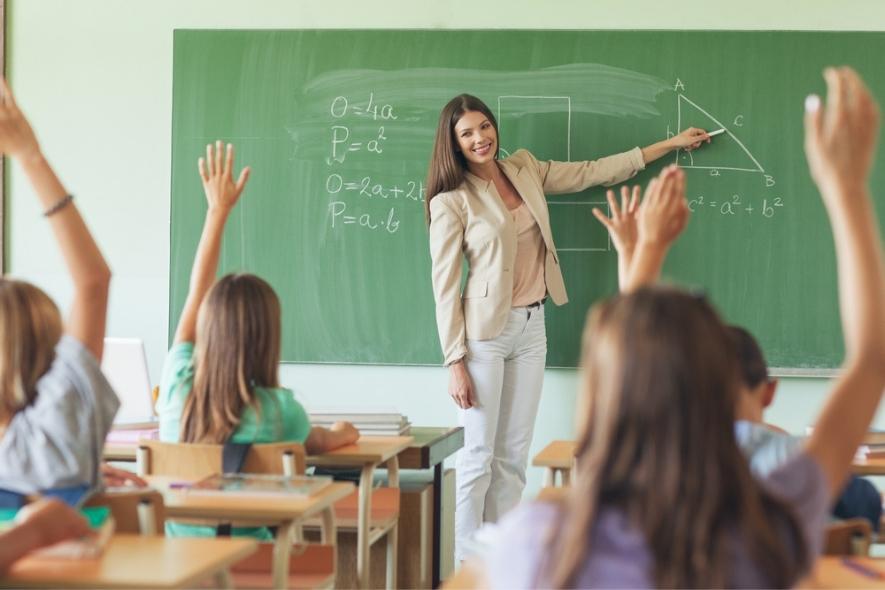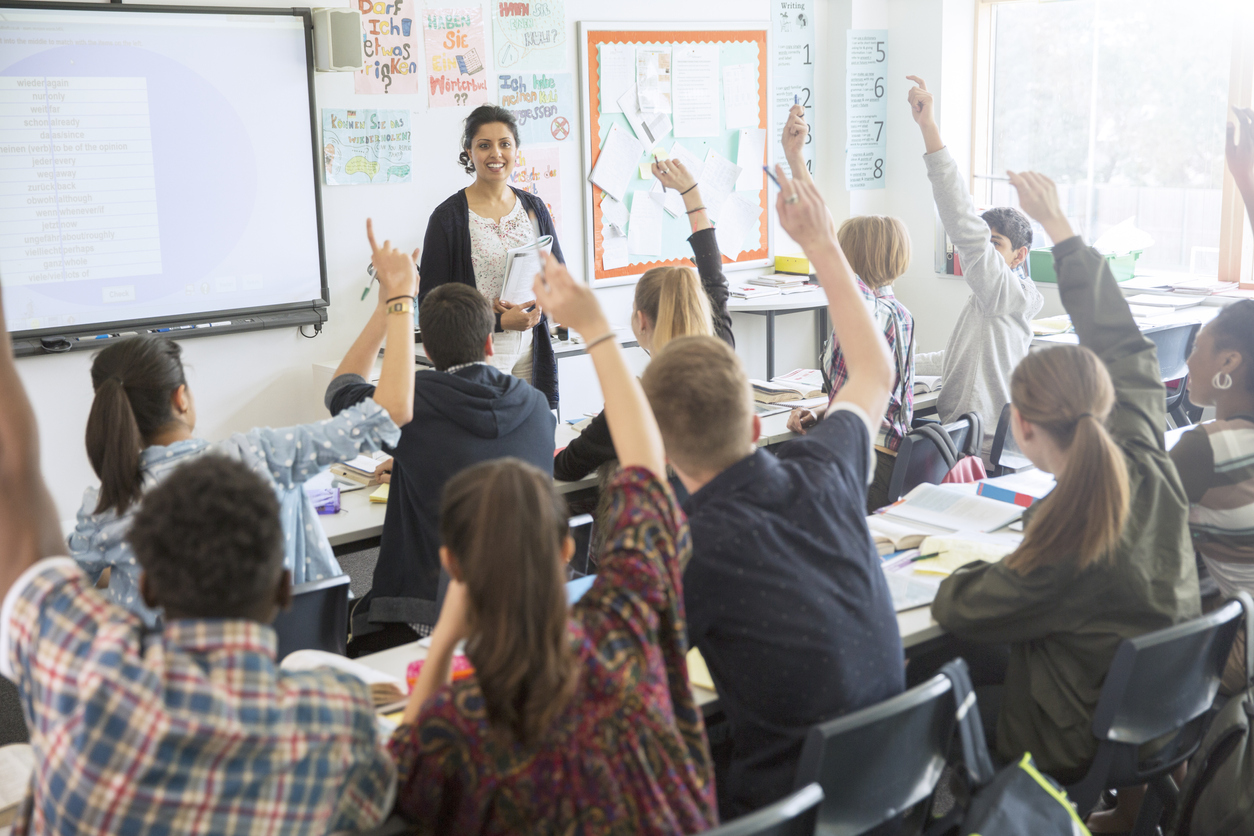Expert Primary Science Tuition Singapore for Understanding Complex Concepts
Expert Primary Science Tuition Singapore for Understanding Complex Concepts
Blog Article
A Comprehensive Guide to the Various Knowing Approaches in Main Science Direction
The exploration of varied learning techniques in key science guideline presents a possibility for educators to improve pupil interaction and comprehension dramatically. By taking a look at hands-on understanding methods, inquiry-based strategies, and collaborative strategies, we can recognize effective methods that deal with numerous finding out styles. In addition, the integration of innovation and separated guideline plays an essential function in promoting a comprehensive atmosphere. Nevertheless, the inquiry remains: exactly how can these approaches be effectively executed in the classroom to optimize their effect? The response lies in a better evaluation of each technique and its ramifications for mentor scientific research.

Hands-On Knowing Strategies
Hands-on learning methods play a pivotal function in main scientific research instruction, involving students in energetic expedition and experimentation. These methods permit learners to engage directly with sensations and products, cultivating a much deeper understanding of clinical concepts. By using manipulatives, models, and real-life experiments, educators develop an atmosphere where trainees can observe, hypothesize, and examine their ideas.
Such techniques not only boost understanding but likewise grow essential thinking and analytical abilities. When trainees take part in activities like constructing simple equipments, planting seeds, or performing chemical responses, they are urged to ask inquiries and seek responses via their own monitorings. This experiential approach helps to demystify intricate clinical concepts, making them extra relatable and easily accessible.
In addition, hands-on understanding advertises cooperation amongst peers, as students typically operate in groups to carry out experiments or share searchings for. This teamwork not just enriches their understanding experience but also creates vital social abilities. Inevitably, incorporating hands-on strategies in key scientific research instruction cultivates a long-lasting love of discovering and inquisitiveness concerning the all-natural globe, laying a solid structure for future scholastic quests in scientific research and past.
Inquiry-Based Understanding
Inquiry-based discovering is a training method that encourages students to ask inquiries, investigate phenomena, and create their very own understanding of clinical principles. This method changes the focus from conventional teacher-led guideline to an extra student-centered experience, where students take the initiative in their instructional trip. By cultivating interest, inquiry-based understanding promotes much deeper interaction with the product, allowing students to explore subjects in a purposeful context.
In technique, this approach frequently entails hands-on experiments, observations, and critical reasoning activities that align carefully with the clinical technique. Students are encouraged to develop theories, style examinations, and analyze data, which cultivates vital skills such as analytical and problem-solving thinking. The duty of the teacher in this structure is to facilitate exploration, assisting pupils through the query procedure while urging independent thought and collaboration.
Additionally, inquiry-based understanding supports a sense of ownership over the understanding procedure, motivating students to go after expertise proactively. This approach not only improves understanding of clinical principles yet also fosters a long-lasting love for knowing, gearing up students with the skills needed to browse a significantly complex globe.
Collaborative Learning Approaches
Collaborative learning strategies equip pupils to participate in meaningful interactions with peers, promoting a common responsibility for their educational outcomes. In main science direction, these techniques encourage students to collaborate to discover clinical concepts, fix issues, and carry out experiments (primary science tuition Singapore). By joining group tasks, trainees can leverage diverse viewpoints, permitting richer understanding and retention of clinical expertise
One trick facet of joint learning is the focus on communication skills. Trainees must express their ideas, listen actively to others, and discuss concepts, all of which are vital proficiencies in both real-world and scholastic contexts. This social communication not just boosts their understanding of clinical principles yet also advertises synergy and conflict resolution abilities.
When trainees see the worth of their payments within a team, they are more likely to take possession of their understanding journey. Overall, integrating joint knowing approaches in primary science guideline grows a vibrant learning environment that prepares trainees for future academic and social difficulties.
Modern Technology Assimilation in Scientific Research
The integration of technology in main scientific research direction improves learning experiences by supplying innovative tools and resources that support numerous training methods, including joint learning - primary science tuition Singapore. Making use of electronic platforms, simulations, and interactive applications allows students to involve deeply with clinical concepts, facilitating a more hands-on technique to Resources understanding
Virtual laboratories, as an example, enable learners to carry out experiments securely and successfully, advertising inquiry-based discovering. These devices can replicate real-world clinical circumstances, allowing trainees to visualize complicated procedures that would be difficult to duplicate in a conventional classroom setup. Moreover, technology fosters communication and partnership amongst trainees, as they can share searchings for and interact on tasks via on-line systems.
Additionally, multimedia presentations and instructional video clips can improve lessons by satisfying varied understanding styles, making abstract concepts a lot more accessible. Data evaluation devices likewise encourage trainees to gather and translate scientific data, strengthening essential believing abilities. In general, the strategic consolidation of technology in key scientific research direction not just boosts interaction yet likewise prepares students for a highly advanced society, equipping them with essential abilities for future clinical endeavors.
Distinguished Direction Approaches
Separated guideline methods are crucial for attending to the varied demands of students in key scientific research education and learning. These methods enable teachers to customize their teaching approaches to accommodate discover here varying abilities, rate of interests, and finding out styles within the class. By employing differentiated direction, instructors can produce an inclusive atmosphere that promotes interaction and improves understanding of clinical principles.
One reliable method is to make use of adaptable grouping, which permits pupils to team up with peers at comparable ability levels or with differing viewpoints. This technique motivates peer understanding and promotes crucial thinking. In addition, using choices in projects can encourage students, allowing them to choose jobs that reverberate with their interests while still satisfying curricular purposes.
In addition, integrating tiered jobs is one more beneficial technique. Deliberately tasks with differing levels of intricacy, instructors can guarantee that all students are suitably challenged, no matter their proficiency. Using formative assessments to evaluate understanding more allows educators to adjust their training methods dynamically, ensuring that each student gets the support they need.
Ultimately, carrying out set apart guideline strategies in main science education not just enhances student understanding outcomes however likewise grows an enthusiasm for scientific research, preparing trainees for future scholastic quests.

Conclusion
In summary, effective key scientific look at these guys research guideline requires a multifaceted technique that incorporates hands-on learning, inquiry-based methods, and collaborative strategies. The combination of innovation and set apart guideline further accommodates diverse discovering designs, promoting an atmosphere for expedition and critical reasoning. By carrying out these methods, instructors can enhance pupil engagement and understanding, eventually nurturing a lifelong interest for scientific research and questions. Such detailed techniques are crucial for developing notified and curious future researchers.
The exploration of diverse discovering approaches in primary scientific research instruction provides a chance for teachers to enhance trainee engagement and understanding significantly.Hands-on knowing techniques play a pivotal role in main science instruction, involving trainees in energetic expedition and trial and error.Inquiry-based understanding is an educational method that motivates pupils to ask inquiries, examine phenomena, and create their very own understanding of clinical ideas.Joint understanding methods encourage students to engage in meaningful communications with peers, promoting a shared obligation for their academic results. In general, including joint knowing strategies in key science instruction cultivates a dynamic knowing environment that prepares students for future scholastic and social challenges.
Report this page